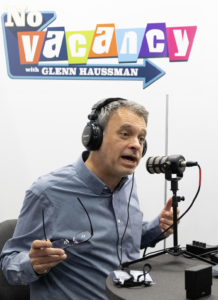NEW YORK, N.Y. – Located just a few blocks from the Javits Center, The Moxy Times Square in midtown Manhattan is normally in the eye of the tourist storm. As was the case for so many lodging destinations, everything changed at the end of March when many hotels (including the Moxy) shut down due to a lack of business.
According to Christian Brosius, general manager, The Moxy played host to first responders during the intervening months of April and May, and only fully re-opened on June 8. As a Marriott-branded enterprise, the reboot has included a massive cleaning initiative to combat the COVID-19 pandemic and ease the minds of guests.
“Marriott put a lot of effort and thought into every area that is not only guest-facing but also employee facing,” Brosius says. “It’s our job as operators to adapt protocols to the particular property.”
 Brosius concedes that Moxy’s current occupancy rate is “very low,” in sharp contrast to a normal June that would typically see about 95% capacity. “We haven’t seen city-wide statistics yet, but I would be surprised if we as a city were in the low double digits [occupancy],” he says. “A lot of hotels closed. It depends on location, hotel size, labor costs—union vs non-union. Maybe now is the time to do a renovation, because you’re not going to have the demand anyway. I think a lot of my colleagues are trying to figure all of that out.”
Brosius concedes that Moxy’s current occupancy rate is “very low,” in sharp contrast to a normal June that would typically see about 95% capacity. “We haven’t seen city-wide statistics yet, but I would be surprised if we as a city were in the low double digits [occupancy],” he says. “A lot of hotels closed. It depends on location, hotel size, labor costs—union vs non-union. Maybe now is the time to do a renovation, because you’re not going to have the demand anyway. I think a lot of my colleagues are trying to figure all of that out.”
Glenn Haussman (pictured), president of Rouse Media and host of the No Vacancy podcast, is seeing un uptick in hotel workers coming back, but the full picture is not rosy. “It’s really still pretty bad out there,” he says. “I think there’s going to be a lot of permanent layoffs, both at the property level and within management companies, ownership groups, and at the major brands.”
As for the bright spots, they’re out there, particularly in areas where more limited contact is possible, such as resorts and beaches. “The Memorial Day holiday saw 70% occupancy in some places, which was absolutely incredible,” Haussman says, “but that was only a jolt because there’s no business travel right now. As we enter the Summer season, which is typically the most traveled, I think quarantine-weary people are going to want to get back out on the road, and that will be a bright spot, relatively speaking, because it’s not bright compared to what we’ve seen in 2019.”
Another silver lining may be what Haussman calls “the opportunity to reset” for hoteliers who are willing to rethink the way they operate. “If you ever wanted to take a chance, or try something new, now is the time,” he says. “During the great depression, many new businesses were created, and I think there are opportunities in the hospitality industry for new businesses to be created beyond the typical hotel—particularly in technology and touch-less services.”
 Back at the Big Apple, phase two started on June 23, with 25% capacity openings for offices, outdoor dining, salons, barbershops, and more. Brosius predicts it will still be too early for tourists, but more city dwellers will undoubtedly emerge.
Back at the Big Apple, phase two started on June 23, with 25% capacity openings for offices, outdoor dining, salons, barbershops, and more. Brosius predicts it will still be too early for tourists, but more city dwellers will undoubtedly emerge.
“The number one thing you’ll see first is locals going out,” he says. “New Yorkers that have been in their apartments for close to three months. They might just say, ‘Listen, I’ll just go and stay in a hotel and hangout somewhere else. If you’ve gotten a stimulus check, you might even have some sort of disposable income right now to do that, and do a little stay-cation.
“I think once outdoor dining opens up, you’ll see that more,” Brosius continues. “People from upstate New York can come in and experience New York. I think we’re going to see an uptick of that for July. Flying will be a later-in-the-year situation, especially the way cases are developing in other states now.”
“I’m optimistic about the long-term future of the hospitality industry,” Haussman adds. “I think Americans in particular are going to shake this off psychologically, and after Labor Day we’ll start to see things really come back to normal. While I’m convinced there will be a second COVID-19 wave, which we’re starting to see now, I think people have made the decision that they are not going to let that stop them. They are going to travel and get back to their lives.”
